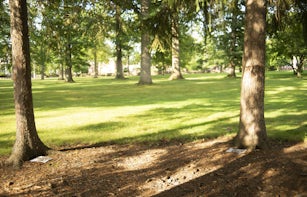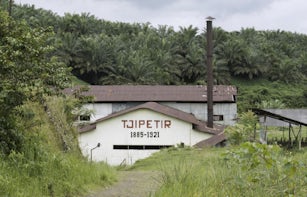Define me a forest, they commanded. Isn’t it a forest when there are trees, lizards, dung beetles, elephants, deer?
Ahem! came the reply, dipped in the dulcet tones of uncertainty, in shuffling embarrassment. A forest is a forest when the state says it is a forest.
It doesn’t need trees?
N … n … no, it springs into being, and stays a forest, by virtue of … a notification.
No wildlife?
N … n … no. Bare and cultured, protected and diverted, it is simply a forest when it is said that it is. Such is the law.
And the forest dwellers?
Uh, we let them be, as was their will, or moved them out, as is our wont, when the forest gave way to factory, a dam, a mine, oh and so much more.
Till 2005.
2005?
Aha, 75 years in the forest and the rights – they shifted, to the dweller. That too became the law.
Ah, then the forest returns to common sense?
Mmm, maybe, just maybe, ways will be found not to regress into meaning, but to progress…
There are reserved forests. And protected forests. And village forests. And reserved trees. Traditions of power and practice have grown around these and have spun and spiralled and twined and corded into many tales, in many tellings.
It was in times long past, well before 1878, that trees had turned precious. Trees had given shade and shelter, fruit and flower; had knitted the soil together, caught the rain, shed leaves and splintered into firewood; had been logged to provide lumber for boats and roofs; had harboured the beast, nested the bird and clustered together in pacts for mutual preservation.
Then it was 1878, and administrative practice and regulation metamorphosed into the force of law. The expansionist state could now declare and appropriate what it wanted for its purposes. The years rolled by, and in 1927 a renewed and reinvigorated version of the 1878 law ‘consolidated the law relating to forests’. This 1927 law was to survive the ravages of time, the cataclysms of history, the winds of change, the advent of modernity and many clichés of like import.
It is interesting, the law. Manufactured by using the authority of the state and its genius, it can declare, deem, define, prescribe, prohibit, provide, regulate, revise, record. It can punish, reward, protect against prosecution.
So it came to pass that – by notification, proclamation, and inquiry, by the power vested in the forest settlement officer – the law enabled the ‘extinction of rights’. So too, it said, once the process for declaring a forest to be a ‘reserved forest’ has been gone through and ‘from the date so fixed’, such forest shall be ‘deemed’ a reserved forest. There was much that was prohibited in the reserved forest. A person may face the force of the law who
makes any fresh clearing where the right to the forest had been taken away, starts a fire, sets fire to the forest, or leaves any fire burning in a way that may endanger the forest
kindles, keeps or carries any fire except at such seasons as the forest officer may think it can be permitted
trespasses or pastures cattle or permits cattle to trespass
causes damage by negligence in felling a tree or cutting or dragging timber
fells, girdles, lops, taps or burns any tree; strips off the bark or leaves; or otherwise damages the tree
quarries stone, burns lime or charcoal
or collects, subjects to any manufacturing process, or removes any forest produce
clears or breaks up any land for cultivation or any other purpose
contravenes any rules in hunting, shooting, fishing, poisoning water, or setting traps
or snares.
That’s a host of things-not-to-do. That’s a lot of rule making and prohibiting-by-the-authority-of-the-law. Breach the directives, and it would be a ‘forest offence’. The threatened consequences for committing a forest offence: imprisonment, fine.
There is more where that came from, conjuring many realities. The state may assign a village community ‘the rights of government’ over a reserved forest, or it may decide not to, or it ‘may cancel such assignment’. ‘Forestland’ or ‘wasteland’ that is the ‘property of the government’ or over which ‘the government has proprietary rights’, or ‘the whole or any part of the forest to which the government is entitled’ – this may be declared a ‘protected forest’. The government may, in the protected forest, ‘declare any trees or class of trees . . . to be reserved from a date fixed by notification’. It may declare that ‘the rights of private persons’ over portions of the forest ‘be closed for such term, not exceeding 30 years’. It may prohibit too ‘the removal of any forest produce in any . . . forest, and the breaking up or clearing for cultivation, for building, for herding cattle or for any other purpose,’ any land in the forest. If the state were to consider control over the forest not quite enough, and that it might be an idea to ‘acquire (it) for public purpose’, it may proceed to expropriate the forest or the land.





